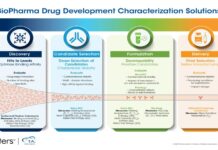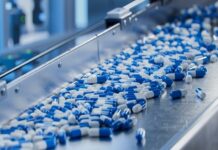The need to improve the effectiveness, safety, and accessibility of drugs drives research and innovation in the ever-evolving pharmaceutical industry. The problem of solubility and bioavailability, which affect how well a medication reaches its intended biological target after oral delivery, is one of the most important issues facing drug developers. Because of their unique qualities and capabilities, specialty chemicals have become essential in tackling these issues. Specialty compounds are changing the field of oral medication delivery systems by enhancing drug formulations and removing obstacles.
Understanding Solubility and Bioavailability Challenges in Oral Drugs
Over 60% of pharmaceutical formulations that are sold commercially are administered orally, making it the most popular and practical method of drug delivery. But there are a lot of obstacles in this way, especially for medications that aren’t very soluble in water. A medicine’s bioavailability, or the percentage of the drug that enters the systemic circulation to have a therapeutic effect, is directly impacted by its solubility. According to studies, around 40% of recently created active pharmaceutical ingredients (APIs) have poor water solubility, which makes it difficult to achieve the intended therapeutic effects.
The solubility, permeability, and stability of a medication in the gastrointestinal tract all affect its bioavailability. Drugs with poor solubility may not dissolve well in the stomach environment, leading to less effective absorption. In order to improve drug solubility and bioavailability, pharmaceutical experts are now investigating novel approaches and cutting-edge materials, such as specialty compounds.
Specialty Chemicals Solubility: A Key Solution
Because of their performance-oriented qualities, specialty chemicals are essential for solving problems with solubility and bioavailability. These substances, which are all designed to enhance the physicochemical properties of APIs and facilitate their efficient administration, include solubilizers, emulsifiers, surfactants, polymers, and co-crystals.
Using solubilising chemicals to improve the dissolving of medications that are not very soluble in water is one such strategy. For example, cyclodextrins, which are specialty chemicals that are frequently employed in the pharmaceutical industry, increase the water solubility of APIs by forming inclusion complexes with them. Other examples include polymers like polyvinylpyrrolidone (PVP) and hydroxypropyl methylcellulose (HPMC), which are commonly used to stabilise amorphous drug forms and avoid crystallisation, which can impair solubility.
Additionally, the creation of self-emulsifying drug delivery systems (SEDDS) is facilitated by specialty surfactants and emulsifiers. When these systems come into touch with gastrointestinal fluids, they naturally create fine oil-in-water emulsions, which greatly improves the solubility and absorption of lipophilic medications. The importance of specialty chemicals is demonstrated by the growing use of SEDDS by pharmaceutical firms to deliver difficult compounds.
Case Studies: Successful Applications in Drug Development
In the pharmaceutical industry, the effects of specialty chemicals on solubility and bioavailability have been extensively studied. One notable example is the use of solid dispersions, a sophisticated formulation method that distributes medications in a solid matrix using specialty polymers. This strategy has been effectively utilised to increase the bioavailability of medications such as the commonly used antifungal medicine itraconazole.
The creation of nanoemulsions stabilised by specialised emulsifiers is another example. Because of their minuscule droplet size, nanoemulsions improve the dissolving and transport properties of hydrophobic substances. In oncology medications, where accuracy and effectiveness are crucial, the use of nanoemulsion technology has enhanced treatment results.
The industry’s increasing use of specialty compounds to maximise API solubility and bioavailability was noted in a recent Elsevier research. The study emphasised how developments in chemical engineering and materials science are bridging the gap between therapeutic promise and formulation problems.
Implications for Drug Development and Patient Outcomes
Both medication developers and patients will be significantly impacted by the incorporation of specialty chemicals into oral medicine formulations. These compounds facilitate the creation of high-potency, low-dose formulations by increasing solubility and bioavailability, which lessens pill burden and improves patient compliance. They also make it easier to administer cutting-edge treatments, such as biologics and customised medications, which frequently have particular formulation difficulties.
Using specialty chemicals gives pharmaceutical businesses more options when it comes to creating drug delivery systems and meeting regulatory requirements. In addition to guaranteeing therapeutic efficacy, increased bioavailability enables the reformulation of already-approved medications, prolonging their shelf life and generating additional revenue sources.
Future Directions and Innovations
Specialty compounds are expected to play a bigger part in pharmaceutical formulations as the need for more sophisticated and potent treatments increases. The creation of smart polymers and stimuli-responsive materials, which adjust to particular physiological conditions to allow for targeted and regulated medication release, are examples of emerging trends.
Additionally, nanotechnology is making great progress in improving bioavailability and solubility. When used in conjunction with specific chemical stabilisers, nanoparticles present a viable means of precisely administering medications that are poorly soluble. Furthermore, the rational design of specialty chemicals is being made possible by developments in computational modelling, which is speeding up the formulation process and cutting down on R&D timescales.
Another major factor influencing how specialty chemicals will develop in the future is the drive for sustainability. In order to ensure that medication research is in line with environmental objectives, green chemistry principles are being incorporated into the manufacturing of polymers and solubilizers. The industry’s dedication to striking a balance between innovation and environmental responsibility is demonstrated by these initiatives.
Challenges and Considerations
There are still challenges even though the incorporation of specialty ingredients in oral drug formulations has numerous benefits. These innovative materials can be costly to manufacture and develop, making them unavailable to small pharmaceutical firms. Time-to-market can be delayed by the strict testing and documentation requirements placed by regulations on specialty chemicals.
To break these barriers, collaboration among chemical manufacturers, pharmaceutical companies, and regulatory bodies will be crucial. The sector can still utilize speciality chemicals to surmount solubility and bioavailability challenges by developing a culture of innovation and adherence.
Conclusion
The function of specialty chemicals solubility in advancing bioavailability is crucial to the pharmaceutical industry’s goal of optimizing patient outcomes and therapeutic effects. From facilitating the delivery of difficult-to-deliver APIs to enabling innovation in drug formulation technologies, these chemicals are revolutionizing the future of oral drug delivery.
By accepting innovation, sustainability, and partnership, pharmaceutical developers and specialty chemical manufacturers can create new opportunities for meeting complicated medical needs. In such an endeavor, the marriage of specialty chemicals solubility is a demonstration of the strength of science and engineering in improving healthcare.




















